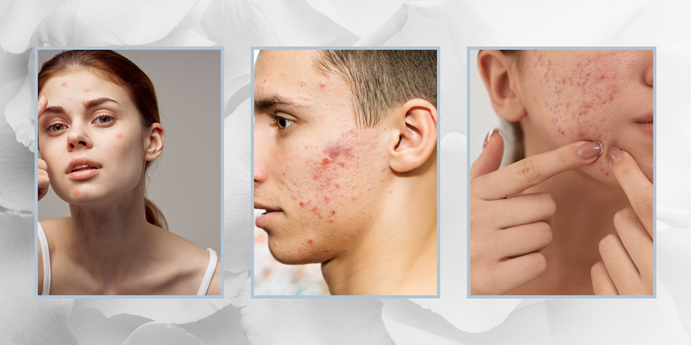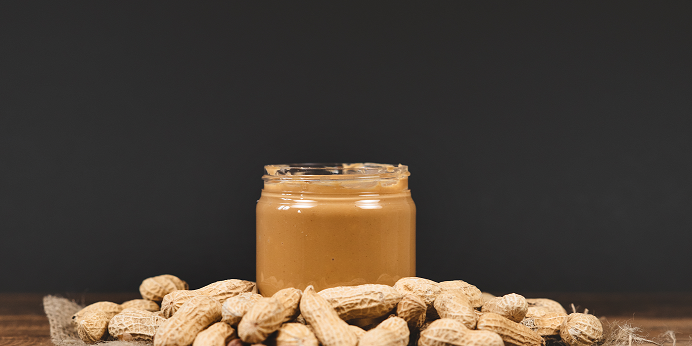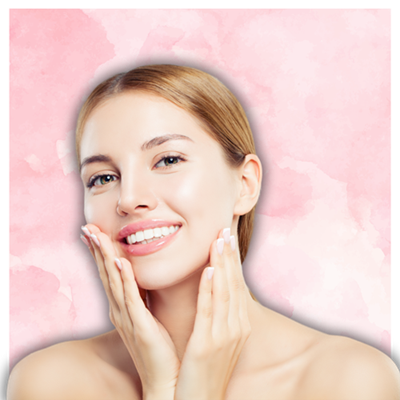
What Is Fungal Acne and How Do You Treat It?

When I first started working with clients with acne, I didn't really know a whole lot about it. Especially the fact that acne comes in all shapes and size, and is caused by multiple types of bacteria found on and in the skin.
If you've got itchy, persistent bumps that resemble acne but doesn't respond to typical treatments then this could be fungal acne, an infection by the yeast Malassezia (muh-la-see-zia), misleadingly similar to regular acne. If you’re puzzled about what is fungal acne and how do you treat it, stay with me here. I'm going to outline the difference, symptoms, and effective treatments for fungal acne, offering clarity and direction without overwhelming you with too much medical jargon.
A Few Key Points About Fungal Acne
- Fungal acne is caused by yeast overgrowth, not the Cutibacterium (formally known as P. Acnes Bacteria or Propionibacterium acnes), and leads to itchy, uniform bumps. It’s often mistaken for regular acne but requires specific antifungal treatments.
- Risk factors include living in warm, humid climates, wearing tight clothing, excessive sweating, immune system issues, and recent antibiotic use.
- You can treat fungal acne with mandelic acid, antifungal creams or oral medications, and prevent recurrence by staying clean, changing out of sweaty clothes, and wearing breathable fabrics.
Let's Define Fungal Acne
You might’ve heard of “fungal acne,” but it’s a misnomer. The real culprit behind those persistent, itchy bumps is not acne but a yeast-induced infection known as Pityrosporum folliculitis or Malassezia folliculitis. This condition is caused by the overgrowth of a type of yeast called Malassezia on your skin, which infects the hair follicles and results in itchy, red bumps or whiteheads.
Everyone has this yeast on their skin, so don't think something is wrong with you.

Unlike acne vulgaris, which is caused by oil and the Cutibacterium, fungal acne stems from an overgrowth of yeast. It’s often mistaken for regular acne due to its similar appearance but requires a different approach to treatment. Picture this: you’re trying to put out a fire with water, only to find out that it’s an oil fire. Using water would just spread the fire, right? The same goes for treating fungal acne with typical acne treatments - it just doesn’t work and can often make the acne worse! I have seen it firsthand working with clients.
What Are Some Fungal Acne Symptoms?
Are you wondering how to identify if you have fungal acne? Well, one distinguishing feature is its itchiness. If your acne is itchy, it’s more likely to be fungal acne than regular acne, which typically does not cause itchiness. Another signature symptom of fungal acne is the appearance of uniform, pinhead-sized red pustules on hair follicles, often observed on the upper chest and back. Recognizing the symptoms of fungal acne can help you differentiate it from regular acne and seek appropriate treatment.
BUT... Fungal acne is not always itchy. It's just a symptom. In fact, a few of my clients never reported having itchy skin when asked about their symptoms.
However, if you have this symptom, imagine wearing a woolen sweater on a hot, humid day. The constant itchiness and discomfort is similar to what people with fungal acne experience. The small, itchy red bumps or whiteheads are not just limited to the face, but can appear anywhere on your body, especially in areas that sweat a lot. This unique combination of symptoms sets fungal acne apart from its bacterial counterpart.
The Mysterious Causes of Fungal Acne
Let’s shift our focus to the factors that cause fungal acne. As I mentioned earlier, the main culprit is an overgrowth of yeast on the skin. This can be triggered by factors like excess oil production, warm and moist environments, and even the use of antibiotics.
Think of your skin as a bustling city with diverse inhabitants. Normally, the Malassezia yeast lives in harmony with other microorganisms on your skin. But when conditions favor the yeast - perhaps due to increased oil production or a warm, humid environment, leading to oily skin - it grows out of control and invades the hair follicles, leading to fungal acne.

Antibiotic use can also disrupt this balance by killing off the bacteria that keep the yeast in check, leading to an overgrowth of the Malassezia fungus, which can result in a yeast infection. But remember, the skin is a complex ecosystem and there could be other causes that are still unknown.
I have another theory that I contemplate about a possible cause of fungal acne. Hormone imbalances. If the body is not within a certain range for each type of hormone, that ecosystem I mentioned before could be affected. I see the most fungal acne in teenagers. Teenagers are producing some crazy hormones (lucky them) and will often have some of the most oily skin I work with.
Risk Factors for Fungal Acne
There are specific factors that could heighten your chances of developing fungal acne. Living in hot and humid climates, for example, can promote sweat and warmth on areas like the chest, back, and arms, creating an ideal environment for yeast overgrowth. When I lived in Hawaii, I had all kinds of skin issues, including an onslaught of acne.
But it’s not just the climate that contributes to fungal acne. Physical factors such as tight clothing and fabric that doesn’t breathe well can also trap moisture against the skin and lead to yeast growth. Additionally, individuals with hyperhidrosis or a weakened immune system are at a higher risk due to excess sweating and a reduced ability to combat yeast overgrowth.

Finally, the use of antibiotics and certain other medications can disrupt the skin’s natural flora, leading to an increased risk of fungal acne as well as bacterial acne.
Can You Diagnose Fungal Acne?
As an esthetician, I never "diagnose" anything, but I will say, "It looks like you have XYZ skin issue."
If you're looking for successful solutions, then understanding how to "test" or have a proper diagnoses is important. Since fungal acne can be mistaken for acne vulgaris due to its appearance as small pimples, redness, and itching, a proper dermatological diagnosis is key as regular acne treatments are not effective against fungal infections.
Dermatologists or Acne Specialists (usually Licensed Estheticians with a specialty for acne) have a few tricks up their sleeve to determine if someone has fungal acne. They may use the following methods:
Wood’s lamp: This special lamp is used to examine your skin, as certain fungal organisms will glow under this light.
Skin scraping: This test involves scraping a small sample of your skin to examine it for signs of Malassezia yeast.
Manual extraction: fungal acne doesn't extract like normal whiteheads of blackheads.
Biopsy: In some cases, a biopsy may be performed to examine skin cells for signs of fungal acne.
These methods can help in getting fungal acne diagnosed accurately.
What Are Treatment Options for Fungal Acne?
Since yeast overgrowth, not bacteria, causes fungal acne, it requires a different approach for treatment. Standard anti-acne therapies that target the Cutibacterium are ineffective against yeast overgrowth and can even make fungal acne worse. So, what does work? The answer lies in antifungal treatments, which come in various forms such as cleansers, serums, topical creams, oral medications, and even certain lifestyle changes.
Topical Treatments
Topical treatments are usually the first line of defense against fungal acne. Specifically, antifungal creams containing active ingredients like ketoconazole, butenafine, or clotrimazole have been proven to be effective. In fact, nearly 50% of people observed an improvement in their fungal acne condition when fungal acne treated with a 2% ketoconazole cream.
In addition to creams, dandruff shampoos containing ketoconazole, such as Nizoral, can also be used as body washes to reduce yeast growth on the skin. This can be particularly beneficial for treating fungal acne, especially for those who are prone to sweat a lot. However, it’s important to note that using topical antibacterial medications on fungal acne may have adverse effects by killing beneficial bacteria and promoting yeast overgrowth.
Now I'm going to share my favorite and what I've had success with in my acne coaching programs . Mandelic Acid!!! This non-prescription topical ingredient is often found in cleansers or seraum form. Mandelic acid, an alpha hydroxy acid (AHA), penetrates the skin to exfoliate dead cells and reduce the buildup of yeast, thereby helping to clear fungal acne.

The Use of Oral Medications As A Fungal Acne Treatment
While topical treatments can be highly effective, some cases of fungal acne may require a more aggressive approach. This is where oral medications come in. For severe or persistent cases, dermatologists may prescribe oral antifungal medications like Sporanox (itraconazole) or fluconazole.
These medications work by targeting the yeast from the inside out, helping to control the overgrowth and clear up fungal acne. However, it’s important to note that oral antifungal medications can come with potential side effects and must be used with caution under a doctor’s supervision.
Lifestyle Changes
Beyond medications and creams, certain lifestyle changes can also make a big difference in managing and preventing fungal acne. For instance, showering more frequently can help to wash away excess yeast on your face and body, thus helping to control outbreaks of fungal acne.
Similarly, here are some helpful habits to prevent fungal acne breakouts:
Use a body wash with a dandruff shampoo containing ketoconazole, like Nizoral, about once a week to maintain a healthy balance of yeast and bacteria on your skin.
Remove sweaty clothes immediately after exercise.
Wear loose, breathable clothing.
Use over-the-counter anti-fungal treatments to prevent yeast overgrowth and subsequent fungal acne breakouts.
Preventing Fungal Acne Recurrence
Having discussed the treatment options, our next focus is on prevention. After all, the best way to manage fungal acne is to prevent it from occurring in the first place. To achieve this, maintaining a healthy balance of yeast and bacteria on your skin is crucial.
One effective strategy is to incorporate a body wash with a dandruff shampoo containing Ketoconazole, such as Nizoral, into your routine about once a week. This can help to keep yeast growth in check. Additionally, showering regularly, especially after sweating, and wearing loose, breathable clothing can help to prevent a moist environment that favors yeast growth. These simple measures, along with the right skincare products , can help prevent the recurrence of fungal acne and keep your skin looking its best.

Natural Remedies for Fungal Acne
Although medical treatments are typically required to manage fungal acne, you can also find help in some natural remedies. For instance, reducing your intake of sugars and carbohydrate-rich foods can slow yeast growth, contributing to fungal acne outbreaks. Incorporating probiotics such as lactobacillus from yogurt or supplements can also help control yeast growth and improve skin health.
Topically, natural antimicrobial substances like honey and tea tree oil can be applied to affected areas to aid in the treatment of fungal acne. Another promising natural remedy is caprylic acid oil, which has antifungal properties and can be used topically. Similarly, sulfur has been used to manage various skin conditions, including fungal acne, due to its safe profile.
Some natural remedies for treating fungal acne include:
Honey
Tea tree oil
Caprylic acid oil
Sulfur

These natural remedies can help alleviate symptoms and promote healing of fungal acne.
Common Misconceptions About Fungal Acne
Even though fungal acne is common, several misconceptions about it persist. One common misconception is that antibacterial treatments can help. As we’ve discussed earlier, antibacterial treatments target bacteria, not the yeast that causes fungal acne, and can even make the condition worse by promoting yeast overgrowth.
Another common mistake is self-diagnosis. Given the similarities in appearance between fungal acne and regular acne, it’s easy to mistake one for the other. However, seeing an acne specialist or a dermatologist cand help you to distinguish between fungal acne and other conditions, as there are subtleties not evident to untrained individuals. Using the wrong treatments based on a misdiagnosis can exacerbate the condition and delay proper treatment.
I will finish with a final reminder that fungal acne, while often mistaken for regular acne, is a distinct skin condition caused by yeast overgrowth. It requires a different treatment approach, including using mandelic acid, topical antifungal creams, oral antifungal medications, and lifestyle changes. While self-diagnosis is common, consulting an acne specialist or dermatologist is important for an accurate "diagnosis" and effective treatment plan. With the right knowledge and tools, you can effectively manage fungal acne and keep your skin healthy and clear.
I have a self-guided acne coaching program that helps people with the process of clearing acne from the face. To learn more you can visit my acne coaching program's and also join my Facebook Group with other people with similar skin issues.
Frequently Asked Questions

What is fungal acne and how is it different from regular acne?
Fungal acne, also known as Pityrosporum folliculitis, is a yeast-induced infection in hair follicles that leads to itchy, red bumps or whiteheads on the skin. Unlike regular acne caused by bacteria and excess oil, fungal acne is a result of yeast overgrowth and needs different treatment.
What are the symptoms of fungal acne?
Fungal acne symptoms include small, itchy, red bumps or whiteheads on the skin, and the itchy nature sets it apart from regular acne.
How is fungal acne diagnosed?
Fungal acne can be diagnosed by dermatologists using a Wood's lamp to examine the skin and conducting tests like skin scraping and biopsy to look for signs of Malassezia yeast. The Wood's lamp can reveal glowing fungal organisms, while the tests examine cells for evidence of the yeast.
What are the treatment options for fungal acne?
The best treatment options for fungal acne are mandelic based cleanser or serums, topical antifungal creams, oral medications, and lifestyle changes. Standard anti-acne therapies won't work against yeast overgrowth.
Can I prevent fungal acne from recurring?
Absolutely, you can prevent fungal acne from recurring by maintaining a healthy balance of yeast and bacteria on your skin, showering regularly, and using antifungal cleansers, serums, body washes or shampoos. Keep up these practices to lower the chances of recurrence.



